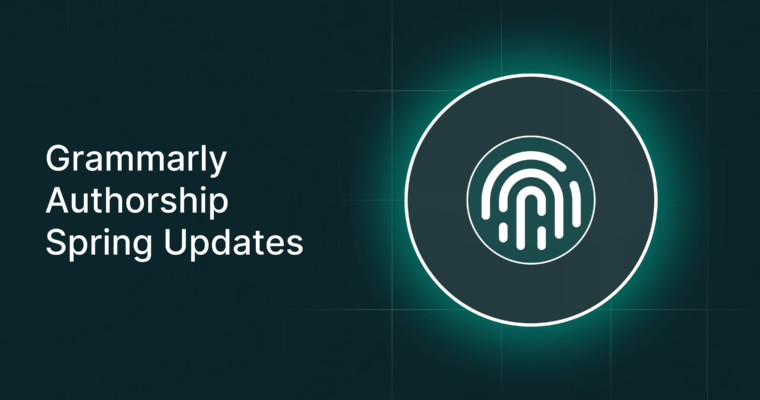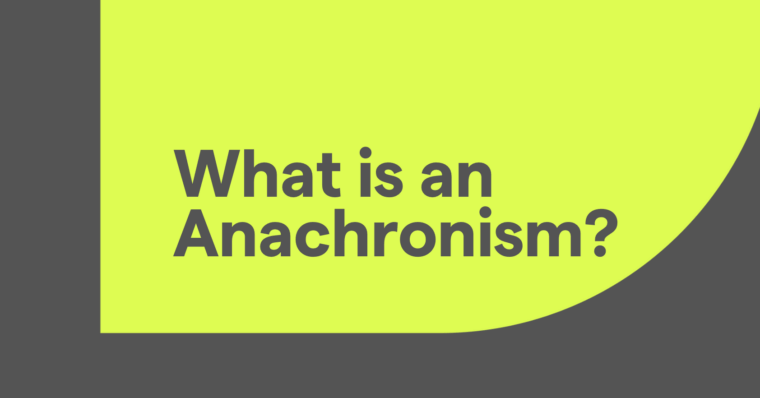
An abstract is a self-contained summary of a larger work, such as research and scientific papers or general academic papers. Usually situated at the beginning of such works, the abstract is meant to “preview” the bigger document. This helps readers and other researchers find what they’re looking for and understand the magnitude of what’s discussed.
Like the trailer for a movie, an abstract can determine whether or not someone becomes interested in your work. Aside from enticing readers, abstracts are also useful organizational tools that help other researchers and academics find papers relevant to their work.
Because of their specific requirements, it’s best to know a little about how to write an abstract before doing it. This guide explains the basics of writing an abstract for beginners, including what to put in them and some expert tips on writing them.
What’s the purpose of an abstract?
The main purpose of an abstract is to help people decide whether or not to read the entire academic paper. After all, titles can be misleading and don’t get into specifics like methodology or results. Imagine paying for and downloading a hundred-page dissertation on what you believe is relevant to your research on the Caucasus region—only to find out it’s about the other Georgia.
Likewise, abstracts can encourage financial support for grant proposals and fundraising. If you lack the funding for your research, your proposal abstract would outline the costs and benefits of your project. This way, potential investors could make an informed decision, or jump to the relevant section of your proposal to see the details.
Abstracts are also incredibly useful for indexing. They make it easier for researchers to find precisely what they need without wasting time skimming actual papers. And because abstracts sometimes touch on the results of a paper, researchers and students can see right away if the paper can be used as evidence or a citation to support their own theses.
Nowadays, abstracts are also important for search engine optimization (SEO)—namely, for getting digital copies of your paper to appear in search engine results. If someone Googles the words used in your abstract, the link to your paper will appear higher in the search results, making it more likely to get clicks.
How long should an abstract be?
Abstracts are typically 100–250 words and comprise one or two paragraphs. However, more complex papers require more complex abstracts, so you may need to stretch it out to cover everything. It’s not uncommon to see abstracts that fill an entire page, especially in advanced scientific works.
When do you need to write an abstract?
Abstracts are only for lengthy, often complicated texts, as with scientific and research papers. Similar academic papers—including doctorate dissertations, master’s theses, or elaborate literary criticisms—may also demand them as well. If you’re learning how to write a thesis paper for college, you’ll want to know how to write an abstract, too.
Specifically, most scientific journals and grant proposals require an abstract for submissions. Conference papers often involve them as well, as do book proposals and other fundraising endeavors.
However, most writing, in particular casual and creative writing, doesn’t need an abstract.
Types of abstracts
There are two main types of abstracts: informative and descriptive. Most abstracts fall into the informative category, with descriptive abstracts reserved for less formal papers.
Informative abstracts
Informative abstracts discuss all the need-to-know details of your paper: purpose, method, scope, results, and conclusion. They’re the go-to format for scientific and research papers.
Informative abstracts attempt to outline the entire paper without going into specifics. They’re written for quick reference, favor efficiency over style, and tend to lack personality.
Descriptive abstracts
Descriptive abstracts are a little more personable and focus more on enticing readers. They don’t care as much for data and details, and instead read more like overviews that don’t give too much away. Think of descriptive abstracts like synopses on the back of a book.
Because they don’t delve too deep, descriptive abstracts are shorter than informative abstracts, closer to 100 words, and in a single paragraph. In particular, they don’t cover areas like results or conclusions — you have to read the paper to satisfy your curiosity.
Since they’re so informal, descriptive abstracts are more at home in artistic criticisms and entertaining papers than in scientific articles.
What to include in an abstract
As part of a formal document, informative abstracts adhere to more scientific and data-based structures. Like the paper itself, abstracts should include all of the IMRaD elements: Introduction, Methods, Results, and Discussion.
This handy acronym is a great way to remember what parts to include in your abstract. There are some other areas you might need as well, which we also explain at the end.
Introduction
The beginning of your abstract should provide a broad overview of the entire project, just like the thesis statement. You can also use this section of your abstract to write out your hypothesis or research question.
In the one or two sentences at the top, you want to disclose the purpose of your paper, such as what problem it attempts to solve and why the reader should be interested. You’ll also need to explain the context around it, including any historical references.
Methods
This section covers the methodology of your research, or how you collected the data. This is crucial for verifying the credibility of your paper — abstracts with no methodology or suspicious methods won’t be taken seriously by the scientific community.
If you’re using original research, you should disclose which analytical methods you used to collect your data, including descriptions of instruments, software, or participants. If you’re expounding on previous data, this is a good place to cite which data and from where to avoid plagiarism.
Results
For informative abstracts, it’s okay to “give away the ending.” In one or two sentences, summarize the results of your paper and the conclusive outcome. Remember that the goal of most abstracts is to inform, not entice, so mentioning your results here can help others better classify and categorize your paper.
This is often the biggest section of your abstract. It involves most of the concrete details surrounding your paper, so don’t be afraid to give it an extra sentence or two compared to the others.
Discussion
The discussion section explains the ultimate conclusion and its ramifications. Based on the data and examination, what can we take away from this paper? The discussion section often goes beyond the scope of the project itself, including the implications of the research or what it adds to its field as a whole.
Other inclusions
Aside from the IMRaD aspects, your abstract may require some of the following areas:
- Keywords — Like hashtags for research papers, keywords list out the topics discussed in your paper so interested people can find it more easily, especially with online formats. The APA format (explained below) has specific requirements for listing keywords, so double-check there before listing yours.
- Ethical concerns — If your research deals with ethically gray areas, i.e., testing on animals, you may want to point out any concerns here, or issue reassurances.
- Consequences — If your research disproves or challenges a popular theory or belief, it’s good to mention that in the abstract — especially if you have new evidence to back it up.
- Conflicts of Interest/Disclosures — Although different forums have different rules on disclosing conflicts of interests, it’s generally best to mention them in your abstract. For example, maybe you received funding from a biased party.
If you’re ever in doubt about what to include in your abstract, just remember that it should act as a succinct summary of your entire paper. Include all the relevant points, but only the highlights.
Abstract formats
In general, abstracts are pretty uniform since they’re exclusive to formal documents. That said, there are a couple of technical formats you should be aware of.
APA format
The American Psychological Association (APA) has specific guidelines for their papers in the interest of consistency. Here’s what the 7th edition Publication Manual has to say about formatting abstracts:
- Double-space your text.
- Set page margins at 1 inch (2.54 cm).
- Write the word “Abstract” at the top of the page, centered and in a bold font.
- Don’t indent the first line.
- Keep your abstract under 250 words.
- Include a running header and page numbers on all pages, including the abstract.
Abstract keywords have their own particular guidelines as well:
- Label the section as “Keywords:” with italics.
- Indent the first line at 0.5 inches, but leave subsequent lines as is.
- Write your keywords on the same line as the label.
- Use lower-case letters.
- Use commas, but not conjunctions.
Structured abstracts
Structured abstracts are a relatively new format for scientific papers, originating in the late 1980s. Basically, you just separate your abstract into smaller subsections — typically based on the IMRaD categories — and label them accordingly.
The idea is to enhance scannability; for example, if readers are only interested in the methodology, they can skip right to the methodology. The actual writing of structured abstracts, though, is more-or-less the same as traditional ones.
Unstructured abstracts are still the convention, though, so double-check beforehand to see which one is preferred.
3 expert tips for writing abstracts
1 Autonomous works
Abstracts are meant to be self-contained, autonomous works. They should act as standalone documents, often with a beginning, middle, and end. The thinking is that, even if you never read the actual paper, you’ll still understand the entire scope of the project just from the abstract.
Keep that in mind when you write your abstract: it should be a microcosm of the entire piece, with all the key points, but none of the details.
2 Write the abstract last
Because the abstract comes first, it’s tempting to write it first. However, writing the abstract at the end is more effective since you have a better understanding of what is actually in your paper. You’ll also discover new implications as you write, and perhaps even shift the structure a bit. In any event, you’re better prepared to write the abstract once the main paper is completed.
3 Abstracts are not introductions
A common misconception is to write your abstract like an introduction — after all, it’s the first section of your paper. However, abstracts follow a different set of guidelines, so don’t make this mistake.
Abstracts are summaries, designed to encapsulate the findings of your paper and assist with organization and searchability. A good abstract includes background information and context, not to mention results and conclusions. Abstracts are also self-contained, and can be read independently of the rest of the paper.
Introductions, by contrast, serve to gradually bring the reader up to speed on the topic. Their goals are less clinical and more personable, with room to elaborate and build anticipation. Introductions are also an integral part of the paper, and feel incomplete if read independently.
Give your formal writing the My Fair Lady treatment
Formal papers — the kind that requires abstracts — need formal language. But for most of us, that means changing the way we communicate or even think. You may want to consider the My Fair Lady treatment, which is to say, having a skilled mentor coach what you say.
Grammarly Premium now offers a new Set Goals feature that helps you tailor your language to your audience or intention. All you have to do is set the goals of a particular piece of writing and Grammarly will customize your feedback accordingly. For example, you can select the knowledge level of your readers, the formality of the tone, and the domain or field you’re writing for (i.e., academic, creative, business, etc.). You can even set a tone to sound more analytical or respectful!





